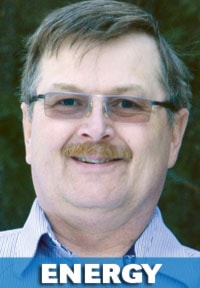“Our news media owes the paying public considerably more of the whole [global warming] story, not facts cherry picked to support a politically driven agenda.”
— Bill Greenwood in a letter to the editor in the Advocate, June 12, 2014
I once had a chat over a beer with Bill Greenwood, so I know he’s a smart guy. And his wise advice against cherry picking bears that out.
However, there’s the old saying that if you talk the talk, then you also have to walk the walk.
Sometimes it’s just too easy to leave out an inconvenient data set that runs counter to the story we wish to tell.
For example, Greenwood mentions that a lot of Britons died from cold weather related factors over the last two winters.
In fact, 31,000 of them died in the 2012-2013 winter.
Now that fits the story (i.e. that global warming, according to Greenwood, is a “hypothetical issue”).
What doesn’t fit the story is the European heat wave of 2003, where peer reviewed analysis estimates that 70,000 people died from the sweltering heat.
Another example of finding facts to fit the story is Greenwood’s mention of Hurricane Sandy.
He rightly notes that it was only a Category 2 storm when it hit the eastern seaboard of the U.S., and then he asks why it has been more than eight years since any stronger storms have hit the U.S.
But just a little more reading would have revealed that Sandy was no 98-pound weakling. In fact, it was the largest Atlantic hurricane ever recorded.
It was 1,800 km in diameter, equal to the distance from Vancouver to Winnipeg.
In comparison, Hurricane Katrina was a pipsqueak, at only 400 km wide at landfall.
Can you imagine what would have happened if Sandy’s energy had been condensed into an area 20 times smaller?
And what about Typhoon Haiyan, which hit the Philippines just last year?
It was the strongest hurricane/typhoon ever recorded, with 315 km/h sustained winds and gusts of up to 380 km/h. But Greenwood didn’t mention it.
Now let’s switch to North American temperatures, where Greenwood notes that the U.S. Weather Service has recorded more cold temperature records than hot ones in the last few years for the lower 48 states.
The story might end there if a person wasn’t curious enough.
But as I noted back in April, there are some very inconvenient images floating around, courtesy of The Weather Network (still easily googled with the term “marching into spring”).
These images are temperature anomaly maps of North America and the Arctic, showing how the melting of the latter is related to the freezing of the former (for the underlying analysis, you have to google “blocking pattern” and “arctic”).
Warning: if you find such images inconvenient, then you might want to treat them like a vampire treats garlic (by running away in the opposite direction).
But wait a minute. Aren’t I cherry picking also?
The Weather Network maps are regional. Sandy, Katrina and Haiyan are all single events.
Likewise with the U.K. winter of 2012-2013 and the European summer of 2003.
For a truly scientific analysis of global warming over the past century or two, you have to look at averages.
For example, we now have the average hurricane, which releases about 70 per cent more energy than it did 30 years ago (due to higher wind speeds and longer durations).
So it is more than curious that Greenwood, in his recent letter, never once used the word “average.”
NASA, however, knows how to calculate averages, and they state that 2013 was the seventh warmest year on record, while 2010 and 2005 were the warmest years.
So unless you figure that they faked the moon landing, and that Neil Armstrong was cheated out of an Academy Award for his acting ability, then averages have something pretty important to tell us.
There’s also something to be said for grinding out numbers ourselves.
Greenwood trashes the oft-cited figure that 97 per cent of climate scientists agree with the consensus that we’re warming the planet. But then he doesn’t offer up any percentage of his own.
Maybe he should have gone to a couple of pages on Wikipedia. One is “List of scientists opposing the mainstream scientific assessment of global warming” and the other is “List of climate scientists.”
From there, it’s a simple matter of seeing what percentage of scientists on the first page are also on the second. I came up with 92 per cent.
It’s not 97 per cent, but neither is it a number that will cause me to lose sleep over some vast global conspiracy intent on sucking money out of my wallet.
Evan Bedford is a local environmentalist. Direct comments, questions and suggestions to wyddfa23@telus.net. Visit the Energy and Ecology website at www.evanbedford.com.
